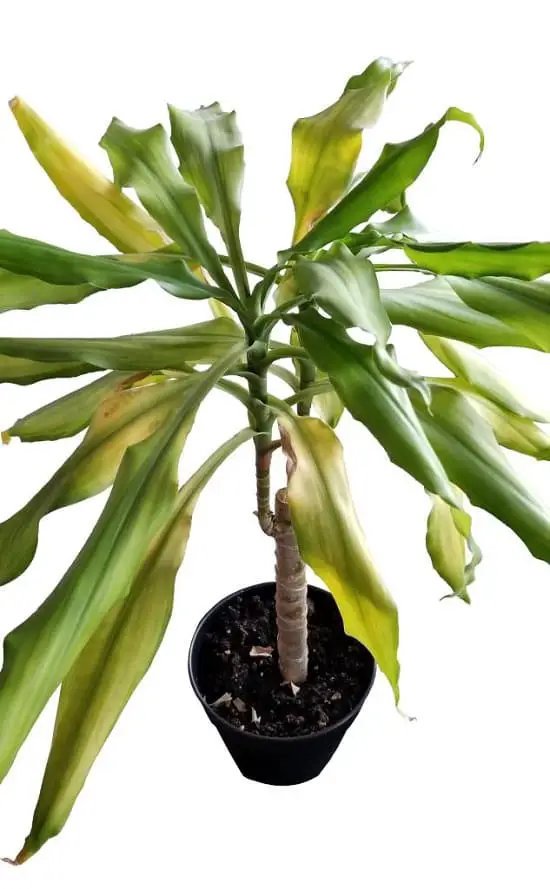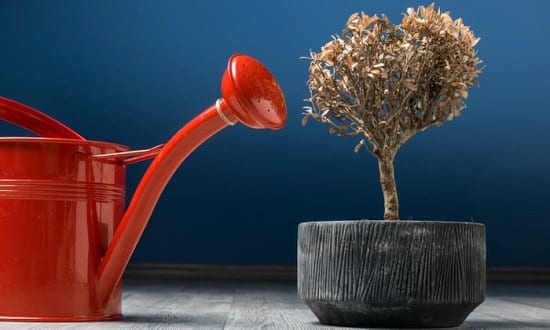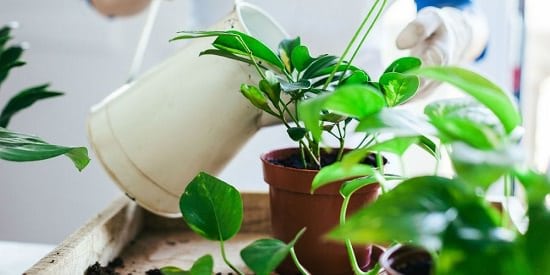What are the Signs of Overwatering? And do you know How to Save an Overwatered Plant? Understand everything in this informative article.
Overwatering is the biggest reason why most container plants die. Beginner plant growers often do this mistake, they keep watering their plants out of love until they summon the death for them. So, what are the Signs of Overwatering and How to Save an Overwatered Plant? Let’s find out!
Here are the best ways to water plants
Signs of Overwatering

Signs of overwatering are usually similar to under-watering, but you can easily observe that you were overwatering by checking out the soil and drainage. If the leaves of the affected plant are soft, watery, and mushier, then this indicates an overwatered plant.
- Leaves turning to a lighter shade of green-yellow is something that happens during the initial stage. Due to this, most of us think that the plant is suffering from drought stress and make the situation even worse by watering even more.
- New shoots becoming brown, leaves drop, and the plant starts to show slow or no growth.
- In some cases, the formation of mold takes place around the base of the stem, leaves, and even on the surface of the soil.
- Prolonged exposure to soggy soil causes root rot, which you can see by exposing the roots a bit. Roots giving off a foul and musty odor is also a sign of root rot.
How to Save an Overwatered Plant?

If you find out at the beginning stage by understanding the initial symptoms, you’ll be able to save the plant just by cutting the water. Apply the following measures to save an overwatered plant on time.
- Locate the plant to a dry spot and stop watering until you see the soil is dry to touch. Also, remove a bit of top growth, flowers, and fruits (if any), this will allow the plant to focus its energy on survival.
- Move the plant to a spot that is partially or completely shaded. This is not to amuse you but as your plant is already hydrated to the extreme, and sudden loss of water due to evaporation at this stage will make it even more stressed.
- Remove all the flowers, fruits, and some of the top growth so that plant can focus its energy on survival. As the root system of your plant is compromised due to rot, it’ll not be able to support the growth of its extra leaves, flowers, and fruits.
- Pat the container form the sides so that the roots loosen up. Lift your plant up gradually holding the base of the stem.
- Let the plant stay out for around five-six hours in the light so that the roots become aerated and dry. If you can put it on a cooling rack, it’d even better as the air will facilitate in the drying process.
- Carefully get rid of the soil infested with mold that is still sticking to the roots. You can do this by putting the roots under running water. Clean gently but make sure not to damage the healthy roots during this process.
- Cut the root parts that are rotten with a sharp and sterile pruning tool. The decayed parts will smell bad and turn mushy, slimy, and dark. On the other hand, a healthy root will be firm and white.
- Once the roots are pruned, sterilize your pruning tool again.
Transferring an Overwatered Plant in a New Container
- Choose a new pot with proper drainage holes or sterilize the old one and fill it with new soil.
- Plant the affected plant in that pot as you usually do and water it with normal water or with cold chamomile tea. Chamomile tea works as a mild fungicide and prevents damping off due to its antimicrobial properties.
- Keep the pot in a spot that is bright and receives filtered sunlight or several hours of morning sunlight until the plant is recovering.
- Afterward, water only and only when the soil becomes dry to the touch.
How to Save an Overwatered Succulent?
To save an overwatered succulent, follow the above steps. However, you can also snip away the mushy and affected leaves of the plant and grow them in a separate pot. You might be able to grow a new plant if you are lucky!
Check out our detailed article on how to save an overwatered succulent here
Post-Reestablishing Care
- When your plant is recovering, water always when the soil seems dry. However, that doesn’t mean letting the soil become bone dry between watering spells.
- Avoid fertilization at all costs until the plant shows new growth. Fertilizing can burn the roots, which you wouldn’t want at this initial recovering stage of the plant.
- Once you see the new growth, you can start fertilizing it again after a week or two.
- After the plant becomes normal again, you can switch back to your regular caring routine depending on the plant. Just don’t overwater this time!
Pro Tip: The best way to avoid overwatering is to water only when the topsoil is dry. You can poke your finger one or two inches deep to feel the moisture level.
Learn the tips and tricks of how to water your plants when you are away here




One of the top reasons houseplants die is due to overwatering. Plant roots need oxygen to function. When soil becomes waterlogged, plant roots can’t breathe — they literally drown. The good news is that it’s easy to adjust your watering technique to give your plants (and their roots!) a little breathing room. Here’s what you need to know about saving a drowning plant.